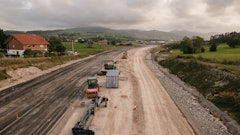It was only a matter of time before the weakness in residential construction began to have some negative effects on the nonresidential market. After all, single-family housing activity is closely aligned with land clearing, retail, utility, roads/street and other sectors supporting urban growth.
Add to this the drop in consumer confidence over the past year, plus declining job creation, and the problem is further compounded. As less consumer dollars are spent, state and federal tax coffers shrink. Public works construction will ultimately suffer as a result.
So how bad are things likely to get? As usual, it depends. Some of you may have already started to feel the pinch, while others will remain largely unaffected in the year ahead.
Continued weakness in the housing market seems a given in 2008. The downturn in new housing starts is expected to slow, yet numbers will remain below 2007 levels.
Nonresidential construction is also likely to see declines. Yet, this should be taken in the context of its performance over the past couple years. In '07, commercial activity was up roughly 17%; this was on top of double-digit growth in '06. So any slowing in the New Year will come off of historically high levels.
According to the FMI's Construction Outlook, nonresidential construction will continue to grow, but simply at a slower pace. The report forecasts nonresidential expanding at a 5% rate in '08, with a 4% rate in '09 as declines in residential construction begin to lower demand for certain commercial market segments.
Highway and bridge construction will remain among the most stable of U.S. construction markets, with continued modest growth, says Dr. William Buechner, vice president of economics and research, American Road & Transportation Builders Association. The value of construction work performed on highway and bridge projects is expected to grow to just under $78 billion in '08, a 3% to 4% increase.
"Equally important, recent signs that rapid inflation in the cost of highway construction materials is easing may allow the projected federal, state and local highway investment to support more projects in 2008," says Buechner.
Institutional buildings and public works construction are also forecasted to maintain slow, steady growth in '08.
However, Ed Sullivan, chief economist, Portland Cement Association, warns that economic factors impacting residential construction, and the U.S. economy as a whole, could place a drag on local, state and federal spending - with public works the most likely to feel its impact. "A pullback in commercial spending could occur in 2008," he indicates. "And if we do get a slowdown in economic growth next year, job creation will slow and a lag will occur in public spending in 2009."
Clearly, it's important to consider the potential for a slowdown as you plan for the months ahead. Yet, there's no reason to panic. While regional variances are likely, commercial construction as a whole seems set to continue to grow. The trick will be to adjust your operations to a more "normal" pace.
For insights on how to keep the dollars coming even as construction activity moderates, turn to Garry Bartecki's Running the Business column.


























